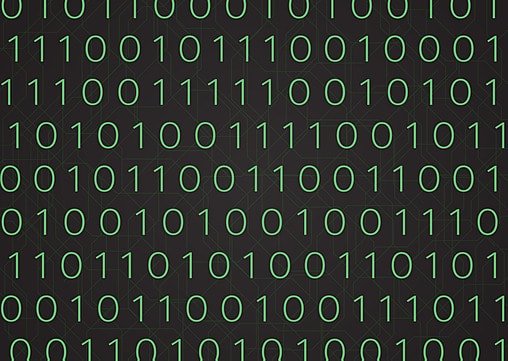A binary digit, commonly known as a bit, is the most basic unit of data in computing and digital communications. It is called binary because it can have only two possible values: 0 or 1. These two values represent off and on states in electronic devices, which are the foundation of all digital data processing.
The Importance of Binary in Computing
The binary system is the foundation of all modern digital systems, including computers, smartphones, and other electronic devices. Unlike the decimal system that uses 10 digits (0-9), the binary system only uses two digits, 0 and 1. This simplicity allows computers to perform complex operations quickly and efficiently using a series of bits.
Each bit represents a small piece of data, and by combining multiple bits, larger and more complex pieces of information can be represented. For example:
- A single bit can represent two possible states (0 or 1).
- Two bits can represent four possible states (00, 01, 10, 11).
- Eight bits form a byte, which can represent 256 possible values.
How Bits Work
The bit is the smallest unit of information in a computer, and its binary nature allows it to serve as the building block for all types of data. These bits are processed by the computer’s central processing unit (CPU) and stored in memory or on storage devices like hard drives.
The computer processes data using binary logic, where 0 and 1 represent different states of voltage in the computer’s circuits. The use of binary makes it easy to design reliable systems that can detect and correct errors, as well as perform mathematical operations.
Applications of Bits in Digital Systems
- Data Storage: Bits are used to store all kinds of digital data, from text and images to audio and video. For instance, in a text file, each letter is represented by a specific sequence of bits. The more bits a system has, the more complex and detailed the data it can store.
- Networking: Bits are also used in data transmission over networks. Data is broken down into small packets, and these packets are made up of bits. The speed of data transmission is measured in bits per second (bps), which indicates how many bits can be sent or received in one second.
- Digital Media: Images, audio, and video are also represented by bits. The higher the number of bits used, the higher the quality of the media. For example, high-definition video and high-quality audio files use a greater number of bits to represent each pixel or sound wave.
Bits and Bytes
Bits are often grouped together to form larger units of data. The most common grouping is the byte, which consists of 8 bits. A single byte can represent 256 different values (2^8), which is enough to represent all the characters in the ASCII character set, including letters, numbers, and symbols.
Here are some common groupings of bits:
- Nibble: 4 bits
- Byte: 8 bits
- Kilobyte (KB): 1,024 bytes
- Megabyte (MB): 1,024 kilobytes
- Gigabyte (GB): 1,024 megabytes
- Terabyte (TB): 1,024 gigabytes
Why Binary?
The binary system is used in computing for several important reasons:
- Simplicity: The binary system is simpler and easier for electronic circuits to process. Computers are based on transistors, which can be in an on (1) or off (0) state, perfectly matching the binary logic.
- Error Detection: Binary allows for the development of error detection and correction methods, which are essential for ensuring data accuracy during processing and transmission.
- Efficiency: Binary is the most efficient way to represent data in electronic systems, as it requires less power and fewer components compared to other numeral systems.
Conclusion
The binary digit or bit is the building block of all digital systems. It forms the foundation for data storage, processing, and transmission in modern computers and electronic devices. Whether it’s a simple text document, a high-definition video, or a complex computational process, bits are the key components that make it all possible.
Understanding the role of bits and the binary system is crucial for anyone interested in computing and digital technology. If you’re looking for more insights into digital systems or need help with web development and IT solutions, visit TechsterTech.com for expert services and support.



